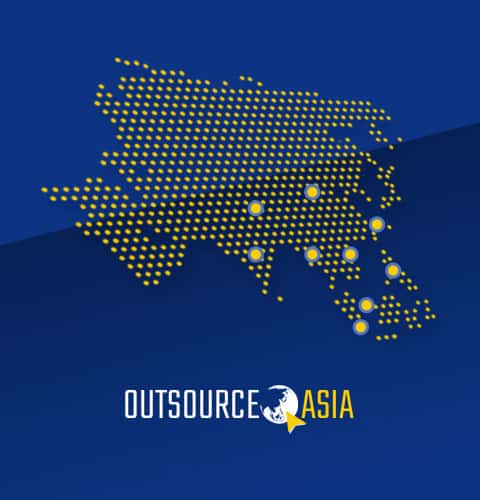
The Future of Work in China
This article on the future of work in China examines aspects of the post-pandemic era, ranging from the overall status of the local labor market up to the long-term influence on consumer consumption and business recovery. See how organizations respond towards the impact of automation and technology on job availability and employment growth in the new normal. There is also assessment on commitment to gender equality, diversity, and inclusion as well as decisions by policymakers and business leaders on aspects of cybersecurity management and data and privacy protection.
Status of Local Labor Market
China’s workforce is comprised of 900 million people – 350 million among these are migrant workers while 9 million are new graduates. The Chinese government has always prioritized policies and investments that would ensure a high level of employment as it is crucial to driving economic growth. According to CEIC Data (Computer and Enterprise Investigations Conference), China`s unemployment rate is at 3.88% by the end of Q3 2021, a little lower than the pandemic-induced 4.2% at the same period in 2020. The figure is updated on a regular basis since 1999, with data at a record low of 3.00% in Q2 2000 and at an all-time high of 4.05% in Q4 2009. Unemployment rate in urban areas for those aged between 25 and 59 had risen to 6.2% in Q1 2020 but ultimately dropped to 4.9% at the start of Q4 2021. On the other hand, youth unemployment rate for the same period for those between 16 and 24 years old is more than double that figure at 14.2% though it was 0.4% lower in the previous months. Recent data from the National Bureau of Statistics (NBS) revealed there have been 11 million new jobs in the first ten months of 2021 while China’s gross domestic product (GDP) grew to almost 10% year on year in the first three quarters of the same year.
However, a shortage of qualified workers for manufacturing and services industries point to underlying problems in the labor market. “The surveyed unemployment rate among those aged between 16 and 24 has dropped for three consecutive months, showing that the employment situation of young people is gradually improving,” said NBS spokesperson Fu Linghui. “At the same time, the pressure on total employment is still relatively large this year. Structural contradictions have also appeared in the process of economic recovery,” NBS added. More than 40% of Chinese companies said that the biggest problem they face is lack of skilled professionals who will fit the job description. There is a big demand for general employees and job-specific staff especially in the industrial and export-oriented sectors. “The phenomenon of fresh graduates struggling to find jobs and companies having difficulties to recruit workers exist at the same time,” explained NBS. Even President Xi Jinping has ordered the provision for more upskilling and reskilling opportunities to narrow the gap between jobs and skills in the economy.
According to Shaun Roache, chief economist for Asia Pacific at S&P Global Ratings, the main drivers of China’s economy in 2021 are exports and investment in real estate and heavy industries. Despite the high demand, job vacancies in these sectors are not compatible with the skills of recent graduates. “Rebalancing, from investment to consumption and from manufacturing to services, has stalled since COVID-19 but it will need to resume for the economy to start generating enough well-paid, urban jobs for new job market entrants,” said S&P’s Roache. Beijing will use government subsidies to launch a massive training program involving 50 million people from all walks of life including high school graduates, former soldiers, and furloughed and migrant workers to ensure there would be at least 25% skilled workers available at the start of 2022.
Consumer Consumption and Business Recovery
As the largest consumer economy in terms of purchasing power parity (PPP) terms, China is projected to contribute to more than one-quarter of all global consumption growth, according to McKinsey Global Institute (MGI). Just two decades ago, more than a billion Chinese people are not capable of spending $11 a day in PPP terms.
By 2030, there would be at least 400 million households within the upper-middle- and higher-level-income category which accounts for almost the same figure that can be found in Europe and the United States combined. There are three emerging patterns in terms of China’s share of global consumer consumption. First, Chinese spending on electric vehicles (EV), consumer electronics, fashion, and other goods under the discretionary spending categories which accounts for 40% of global consumer expenditures is growing more than seven times faster than the global rate. Second, Chinese spending on personal care and premium beauty as well as luxury goods which accounts for almost 10% of global consumption is growing three times faster than globally. Third, there is substantial growth in the consumption of “mass” beauty and personal care products, health and home care services, and packaged foods under the consumer packaged goods (CPG), all of which accounts for 10%-15% of global revenue pools.
One-fourth of the nation’s almost 1.5 billion population resides within the 30 largest cities and city clusters – driving 45% of total household consumption and spending 80% higher on a per capita basis than the national average. As China continues to urbanize, 90% of projected consumer consumption growth will take place in the next tier of cities where incomes are also rising.
While many Chinese consumers put a premium on foreign brands in the past, there has been a sharp leaning towards fulfilling the notion of ‘guochao’ – a nationalistic desire to patronize Chinese goods and services – for most of the past decade which resulted to an increase from 38% to 70% in terms of domestic purchases. McKinsey, however, observed that the rise of local brands is also driven by improved features, performance, and competitiveness of the Chinese products.
The booming digital economy in China can be seen in the availability of tech-based business models in all types of e-commerce, mobility services, food delivery, healthcare, and digital payment facilities. Between 2017 and 2024, data consumption in China is estimated to grow ninefold which will make the nation the largest source of consumer data in the world in the next year.
For many local companies and even foreign firms with headquarters in the country, business recovery is guaranteed by considering three important factors: 1) Create and access the right consumer data for their business by setting up their own direct-to-consumer (DTC) channels; 2) Deliver tangible benefit to consumers through personalization of services, product offerings, and communications; 3) Ensure data privacy and protection according to consumer needs and regulatory requirements.
Commitment to Gender Equality, Diversity, and Inclusion
Since the beginning of Deng Xiaoping’s economic liberalization, China has become the global leader in manufacturing and merchandise trading as well as the world’s largest economy (on a purchasing power parity basis). But this also entails a widening gender gap in labor force participation and earnings as state-owned enterprises and private sector firms prefer men over women to join their workforce. Women who take maternity leave will be immediately replaced without compensation; sexist recruitment practices requiring women applicants to be ‘trim’ and ‘aesthetically pleasing’ had contributed to a decrease in the proportion of women working; and, the average monthly income of female employees is 17% lower than their male counterparts in 2020.


